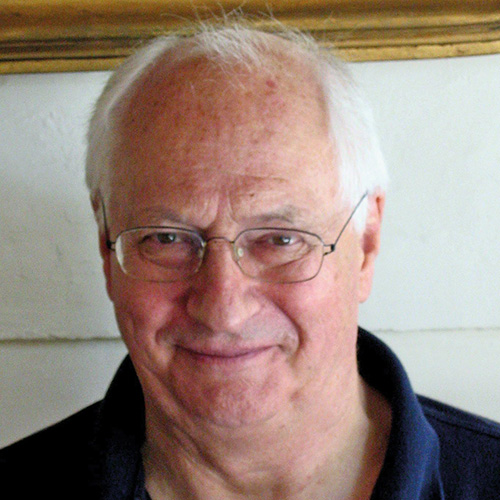The actual practices of a guild are rarely written down because, unlike an argument or a manifesto, they are hard to codify and are usually learned through doing. Crafts – from the mundane to the arcane, from plumbing to prestidigitation – are, in essence, a bit mysterious.
This is why accounts of Sir William Empson’s ideas are rarely the subject of PowerPoint slides or “in a nutshell” guides, yet every single student of English is initiated into the practice of close reading – which Empson played a crucial, almost alchemical, role in forming. This is also why interest in him is a bit, well, culty, to be honest: one learns the practice and only afterwards, like a protagonist in an H. P. Lovecraft story, does one discover – whisper – the source. And because the doing is the focus, the interest in Empson lies less in what is conjured up, more in the conjuration itself.
Everything you need to know about Empson’s life, almost, is in John Haffenden’s marvellous, gigantic biography and Selected Letters: Michael Wood’s short On Empson, a charmed and charming book of immense subtlety, insight and nuance, complements this by being about Empson’s craft, while displaying its own magic, both like and unlike Empson’s.
Wood’s account of Empson as a writer – both poet and critic – begins with his scintillating analysis of the word “catch” in Macbeth, “not as a model – who could follow it? – but as a spectacular instance of what criticism can do, of how personal and imaginative it may be while remaining very close to the text”. Wood is aiming to “catch” (grasp, imprison, but also, and less antagonistically, hear, pay attention to, catch up with) Empson, setting himself a very high bar: one he reaches.
Born in 1906, Empson was expelled from the University of Cambridge in 1929 before he could take up a postgraduate fellowship because – we heard this story as undergraduates in the 1980s, still as living gossip – condoms were found in his rooms. He had begun Seven Types of Ambiguity, the book that made his name and helped to shape the discipline, as a student. Wood describes how Empson’s tutor, I. A. Richards, catches the moment of genesis: taking a “sonnet as a conjuror takes his hat, [Empson] produced an endless swarm of lively rabbits”.
Despite its title, Seven Types isn’t much good as a typology (“in a sense the sixth class is included within the fourth” and so on). But Wood argues that the types are “fictions that give us time to think”: the critical grist is the idea of ambiguity, “any verbal nuance, however slight, which gives room for alternative reactions to the same piece of language”. So, Wood and Empson, on Macbeth again: “light thickens, and the Crow/Makes wing to th’ Rookie wood”: “Rookie” does not mean “murky or damp or misty or steamy or gloomy or having to do with rooks. It means all of these things. ‘It makes you bear in mind all the meanings it puts forward’.” This facing or embracing the “simultaneous presence of many meanings” is one characteristic which makes literary studies a different subject from all others, and means close reading is an open-ended, hard-to-pin-down and shared practice (one reason it makes such great pedagogy). Yet its consequences, and potential contradictions, for students and scholars of literature, are much more complicated. They were more complicated for Empson, too, and this also is what Wood’s book has brilliantly caught.
The seventh, final type of ambiguity demonstrates “a fundamental division in the writer’s mind”. For Wood, it is the most profound because it illuminates “the most complicated and deeply-rooted notion” of living an unresolvable contradiction. Empson, Wood tentatively suggests through reading his verse, spent his life “perched among contradictions”, including “his career in poetry and criticism”. He taught and travelled in Japan and China, spent the war in the BBC Overseas Service before taking a chair at the University of Sheffield in 1953: during this period, he gave up poetry. Where Empson earlier found contradictions productive (“as a form of liberty”), leading to balance or unification or poise held between two forces, he no longer knew “what to do with them, except to register the mess”.
The Structure of Complex Words (1951), his masterpiece, I think, focuses on how certain words (“honest” in Othello, “fool” in King Lear) accumulate meanings – and so, Wood notes, defy “the very notion of anything as stable as structure”. Yet Wood turns this style back on Empson, too, and finds himself at odds with Empson’s upper-class English heartiness. Indeed, this critical biography is not uncritical of Empson. Wood shows how Empson sometimes seems to be “on the way to inventing a Monty Python school of literary criticism” by suggesting, say, what Coleridge should have written. As he writes about a reading of Hamlet, “Empson’s idea of Shakespeare’s ‘method’ makes the film Shakespeare in Love look like a documentary”. He is also clear-sighted about Empson’s apparent hatred of “literary theory” (“only congratulating itself on its own cleverness”) yet aware of his interest, at root, in many of the same ideas.
Wood writes that if Empson’s work “doesn’t look like much of the criticism we know, it is because it isn’t”. Great critics may be inimitable in their reach and style, and Wood doesn’t mean this remark to castigate continuing conversations of literary theoretical and critical scholarship. But I do think there is much criticism and theory that resembles or descends from Empson’s, and not only in the work of critics, such as Christopher Ricks, who explicitly claim it.
Two books that draw on literature arrived the same week as On Empson. Wood makes much of the fact that while we often have to live with contradictions, Empson loathes the way that this can become “an alibi, a license to abuse others or ignore their suffering or gloat over it”. Sara Ahmed’s Living a Feminist Life shares something of this sentiment: its belief that understanding literature is not far from understanding life, her insight into the everyday and her style give her work, like Empson’s, a performative intensity and power. Ben Knights’ Pedagogic Criticism, too, uses close reading and “simultaneous presence of many meanings” to unpick the often untraced influence of reading on teaching and teaching on reading. Precisely because “fashionable names fade” yet “practice continues”, as Wood puts it, Empson’s influence seems just as strong as ever, and recognising it is important, because part of the point of education, and literary criticism, is to make hidden things appear, a trick against tricks.
If this book, a great critic on a great critic, were in paperback, I’d give it to my students not only because it demonstrates and describes “the kinds of adventure that reading can afford” but for its easy humour and more challenging insights (“I would love to believe, with Brecht, that whatever stimulates thinking ‘is useful to the cause of the oppressed’ but I am afraid that if an oppressor thinks more and better, he will only get better at oppressing”). Wood saw Empson lecture only once and “felt the passion and the mind in play, and there was something wonderfully tireless about the performance, as if talking avidly about literature and life was the best thing anyone could be doing”. As if, notice, it might.
Robert Eaglestone is professor of contemporary literature and thought, Royal Holloway, University of London.
On Empson
By Michael Wood
Princeton University Press, 224pp, £18.95
ISBN 9780691163765 and 9781400884742 (e-book)
Published 9 April 2017

The author
Michael Wood, emeritus professor of English and comparative literature at Princeton University, was born in Lincoln.
When he asked a teacher at his grammar school there whether he should do his national service before or after going to Cambridge, “he didn’t say anything, just gave me a copy of Stendhal’s Charterhouse of Parma, with its magnificent view of the battle of Waterloo through the eyes of a baffled Italian boy. I decided to go to Cambridge first.”
In his thinking about literature, Wood says that he has been enriched by “many first-hand encounters with writers – I think of Philip Roth, Octavio Paz and Toni Morrison in particular…I treasure all these conversations in themselves. But mainly they taught me how different reading is from writing, and how to think about the difference. Criticism is a form of writing, of course, but it’s about reading.”
William Empson, the subject of Wood’s new book, “has always been hovering in my mind since I first read him when I was a student. I don’t think I ever got over the thrill of seeing what he could do with texts and language – or perhaps of seeing, through him, what could be done. Literature itself becomes a constant excitement when you see how much is going on even in simple sentences, and a lot of ordinary language becomes literature. The philosopher Stanley Cavell has been important to me, too, in this respect.”
As for the state of academic criticism today, Wood believes that “some amazing work is being done, and I like the way the best of it crosses boundaries – between literature and film, literature and painting, literature and history… The main thing is to keep working, and not be tempted to sell criticism as something else: therapy, for example, or propaganda, instead of the exercise of freedom of thought.”
Matthew Reisz
POSTSCRIPT:
Print headline: Many rabbits in a conjurer’s hat
Register to continue
Why register?
- Registration is free and only takes a moment
- Once registered, you can read 3 articles a month
- Sign up for our newsletter
Subscribe
Or subscribe for unlimited access to:
- Unlimited access to news, views, insights & reviews
- Digital editions
- Digital access to THE’s university and college rankings analysis
Already registered or a current subscriber? Login




